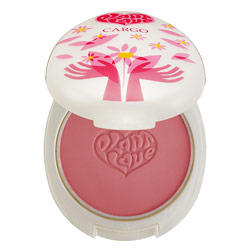 I was browsing Sephora online (one of the Curator's favorite activities, of course) and discovered that Cargo has created an entire line of PlantLove products. The extensive lineup includes blush, highlighter, mineral foundation, lip gloss and eye shadow, all of which are paraben- and phalate-free and are housed in biodegradable (not to mention adorable) packaging. According to Sephora, the plastic cases are "100% compostable" and is made from plant-based plastic that is "green house gas neutral and doesn't contribute to global warming."
I was browsing Sephora online (one of the Curator's favorite activities, of course) and discovered that Cargo has created an entire line of PlantLove products. The extensive lineup includes blush, highlighter, mineral foundation, lip gloss and eye shadow, all of which are paraben- and phalate-free and are housed in biodegradable (not to mention adorable) packaging. According to Sephora, the plastic cases are "100% compostable" and is made from plant-based plastic that is "green house gas neutral and doesn't contribute to global warming."
I've posted about the cute and environmentally sound PlantLove lipstick packaging before, and I'm so glad Cargo expanded the line – not just because it's eco-friendly and contains natural ingredients , but because these new items feature slightly different packaging than the original lipsticks. ;) I definitely need to get my hands on some of these!
(photo from Sephora.com)